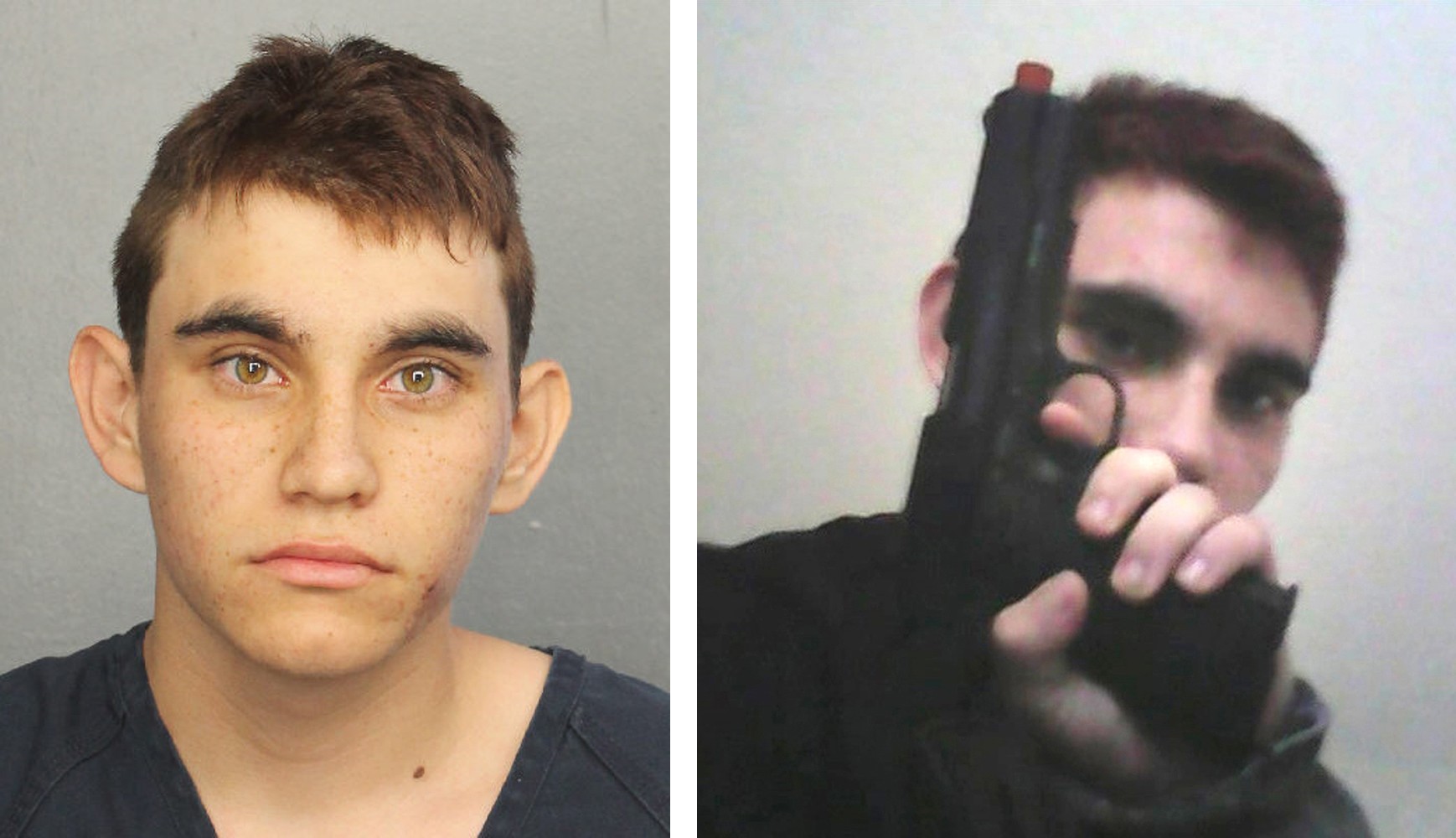Events:
Columbine High School Massacre:
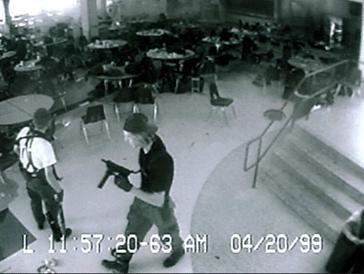
The Columbine High School shootings was a massacre that occurred on April 20, 1999, at Columbine High School in Littleton, Colorado, which left 15 dead, including the two students responsible for the attack. The shootings were carried out by Eric Harris, who was 18, and Dylan Klebold, who was 17. They entered Columbine High School in Jefferson county with semiautomatic rifles, pistols, and several explosives and in less than 20 minutes, they killed 12 fellow students and a teacher and wounded 21 others. The violence came to an end when Harris and Klebold took their own lives. Officials later found two propane tank bombs in the cafeteria which if they had detonated, the death toll would have been much higher. News of the Columbine tragedy stunned the country and there was strong criticism of the slow police response. Despite the fact that the shooting ended by noon, police and sheriff’s deputies, believing there was continuing danger, did not move into the shooting area until several more hours had passed, during which time some victims bled to death. In the larger view, the Columbine massacre set off a national debate on how to end gun violence in schools, and a growing number of schools throughout the country invested in private security forces and metal detectors. Mark Manes, the man who sold a gun to Harris and bought him 100 rounds of ammunition the day before the murders, was sentenced to six years in prison and Philip Duran, who introduced Harris and Klebold to Manes, was also sentenced to prison time. Some victims and families of people killed or injured filed suit against the school and the police, but most of these suits were later dismissed in court. Subsequent investigations determined Harris and Klebold chose their victims randomly, and the two teens originally had intended to bomb their school, potentially killing hundreds of people. There was speculation that Harris
and Klebold committed the killings because they were members of a group of social outcasts called the Trenchcoat Mafia that was fascinated by Goth culture. It also was speculated that Harris and Klebold had carried out the shootings as retaliation for being brutally bullied. Blame for the shootings was also directed at heavy metal or "dark music" bands such as Marilyn Manson, KMFDM, and Rammstein. Blame for the shootings was also directed at violent movies. Parents of some of the victims filed several unsuccessful lawsuits against film companies, over films such as The Basketball Diaries, which includes a dream sequence with a student shooting his classmates in a trench coat. In the Basement Tapes created by the shooters, they debate on whether or not Steven Spielberg or Quentin Tarantino are appropriate choices to direct films about the massacre. Their home videos also show inspiration taken from Pulp Fiction. Both were fans the film Lost Highway and the movie Apocalypse Now was found Harris's VCR. Violent video games were also blamed for the shooting. Parents of some of the victims filed several unsuccessful lawsuits against video game manufacturers. Jerald Block believes their immersion in a virtual world best explains the massacre, while Brooks Brown disagrees that video games caused the massacre, but he agrees elements of their plan came from video games. Harris and Klebold were both fans of shooter games such as Doom, Quake, Duke Nukem 3D, and Postal. A file on Harris's computer read the massacre will "be like the LA riots, the Oklahoma bombing, WWII, Vietnam, Duke and Doom all mixed together". In his last journal entry, Harris wished to "get a few extra frags on the scoreboard". After the massacre, it was alleged that Harris created Doom and Duke Nukem 3D levels resembling CHS, but these were never found.
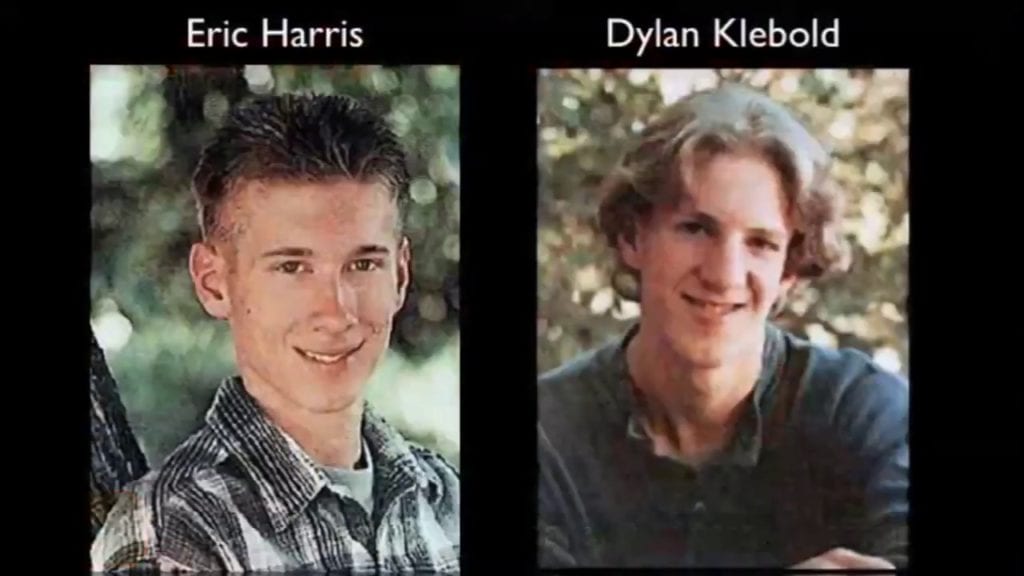
Virginia Tech shooting:
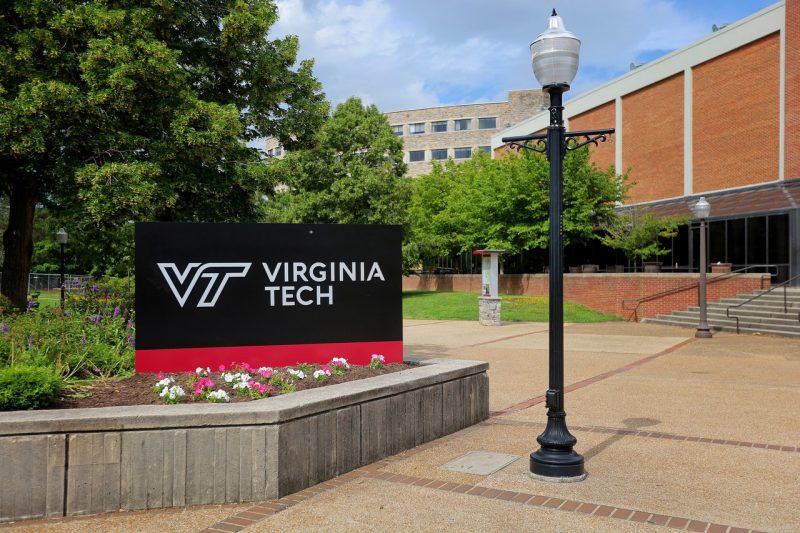
On April 16, 2007, 32 people died after being gunned down on the campus of Virginia Tech by Seung-Hui Cho, a student at the college who later died by suicide. The Virginia Tech shooting began around 7:15 a.m. when Cho, a 23-year-old senior and English major at Blacksburg-based Virginia Polytechnic Institute and State University, shot a female freshman and a male resident assistant in a campus dormitory before fleeing the building. Police soon arrived on the scene, but were unaware of the gunman’s identity and they initially pursued the female victim’s boyfriend as a suspect in what they believed to be an isolated domestic-violence incident. However, at around 9:40 a.m., Cho, armed with a 9-millimeter handgun, a 22-caliber handgun and hundreds of rounds of ammunition, entered a classroom building, chained and locked several main doors and went from room to room shooting people. Approximately 10 minutes after the rampage began, he died from a self-inflicted gunshot wound. The attack left 32 people dead and more than a dozen wounded. In all, 27 students and five faculty members died in the massacre. Two days later, on April 18, NBC News received a package of materials from Cho with a timestamp indicating he had mailed it from a Virginia post office between the first and second shooting attacks. Contained in the package were photos of a gun-wielding Cho, along with a rambling video diatribe in which he ranted about wealthy “brats", among other topics. In the aftermath of the Virginia Tech shooting, authorities found no evidence that
Cho, who was born in South Korea and moved to America with his family in 1992, had specifically targeted any of his victims. The public soon learned that Cho, described by students as a loner who rarely spoke to anyone and had a history of mental-health problems. In the subsequent investigation, officials researched Cho’s mental history, with some speculating that he suffered from schizophrenia. His handling by both state and university mental health services also came under scrutiny. Virginia Tech counselors claimed to be unaware that Cho had been ordered to undergo outpatient treatment. Law enforcement also examined the package sent to NBC News. In the materials, Cho, who often rambled and was at times incoherent, expressed anger and claimed, “You forced me into a corner and gave me only one option. The decision was yours.” He referred to Virginia Tech students as “brats” and “snobs,” and he also talked about “martyrs like Eric and Dylan,” the shooters responsible for the mass shooting at Columbine High School in 1999. However, no clear explanation for the shootings was offered, and officials found the material to have “little investigative value.” In 2008 Virginia reached an $11 million settlement with many of the victims’ families. However, two families rejected the offer and sued the state and its employees at Virginia Tech for wrongful death, claiming the university failed to promptly issue a campuswide alert. The case eventually reached the U.S. Supreme Court, which ruled in 2013 that Virginia Tech was not negligent.
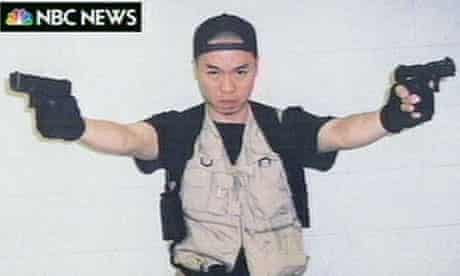
Sandy Hook Elementary School Shooting:
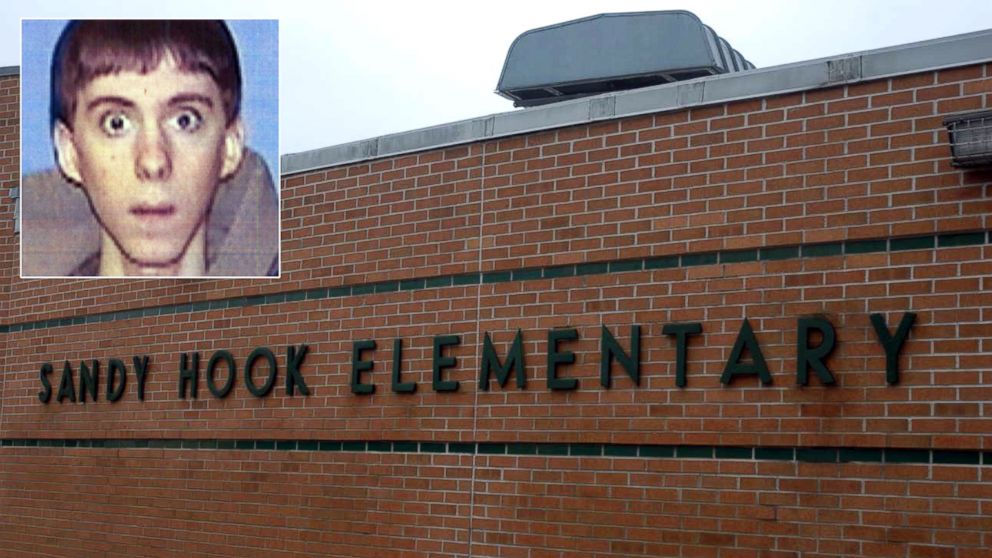
Sandy Hook Elementary School shooting was a mass shooting in Newtown, Connecticut, on December 14, 2012, that left 28 people dead and 2 injured. The attack began when 20-year-old Adam Lanza killed his mother, Nancy Lanza, in the home that the two shared in Newtown. She was shot four times with a .22-calibre rifle which she had purchased, as well as an AR-15 and several other firearms that Adam Lanza would use later that day in the years prior to the shooting. Before leaving the house, Lanza destroyed his computer’s hard drive, an act that would make evidence gathering difficult for law enforcement personnel. Adam Lanza gathered the AR-15, two semiautomatic pistols, and a shotgun, as well as several hundred rounds of ammunition, and drove his mother’s car to Sandy Hook Elementary School, a public school in Newtown for kindergarten through fourth grade. Leaving the shotgun in the car, Lanza shot his way through a window next to the school’s locked security door just after 9:30 AM. He was immediately confronted by Sandy Hook principal Dawn Hochsprung and school psychologist Mary Sherlach. Lanza shot and killed both women, but the encounter and the sounds of gunfire were broadcast to individual classrooms via the school’s public address system. In accordance with previously established lockdown protocols, teachers immediately took steps to attempt to safeguard their students, concealing them in closets or bathrooms and barricading doors with furniture or with their own bodies. Lanza entered the classroom of teacher Lauren Rousseau and killed her and 14 children. He then went to a second classroom, where first-grade teacher Victoria Soto had hidden her students in a closet. She attempted to misdirect Lanza by telling him that her class was in the school’s auditorium on the other side of the building. Lanza killed Soto, as well as six students who attempted to flee from their hiding place. Also killed in the shooting were Anne Marie Murphy, a special education aide, and behavioral therapist Rachel D’Avino, and two other Sandy Hook staff members were injured.
The first emergency call from the school was received at about 9:35 AM and law enforcement personnel responded within minutes. The first officers to enter the building caught a glimpse of an individual dressed in dark clothing, and, after hearing a series of shots, they found Lanza near the door to Soto’s classroom, dead from a self-inflicted gunshot wound. As the scale of the attack became clear, dozens of state and local police officers descended on the school, which police officials said would remain closed as a crime scene “indefinitely". The school would be demolished in 2014 and replaced by a new building in 2016. Investigators determined that Lanza had used the AR-15 as his primary weapon throughout the attack, though he had taken his own life with a handgun. In November 2013, the Connecticut State’s Attorney released a report noting that Lanza had “significant mental health issues that affected his ability to live a normal life and to interact with others"." However, mental-health professionals who had worked with him did not see anything that would have "predicted his future behavior,” according to the report. His reason for shooting up the school remains a mystery to this day. Legislators pledged to introduce some form of gun control legislation in the wake of the Newtown shootings, and U.S. President Barack Obama stated that he would use all the powers of his office to prevent future mass shootings. The National Rifle Association responded by advocating the introduction of armed guards into all American schools. More than one-fifth of public and private schools in the U.S. already employed police or other armed security personnel. The hallmark piece of federal legislation to be inspired by Sandy Hook was the proposed Assault Weapons Ban of 2013. Introduced by Senator Dianne Feinstein a month after the shootings, the bill banned the sale of more than 150 specific firearm models as well as magazines that held more than 10 rounds of ammunition. Although there was widespread public support for more restrictive gun laws, the bill was defeated 60-40 in the Senate.
Parkland shooting:
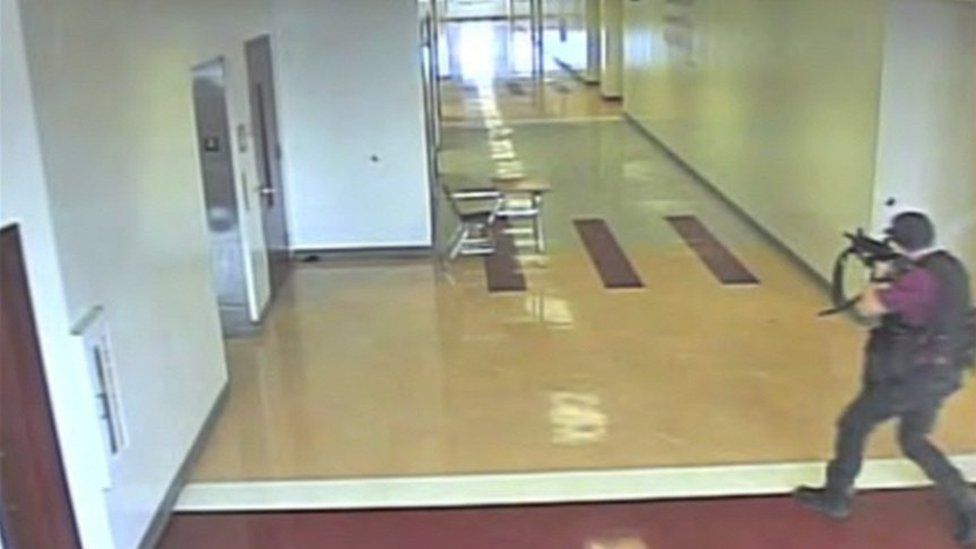
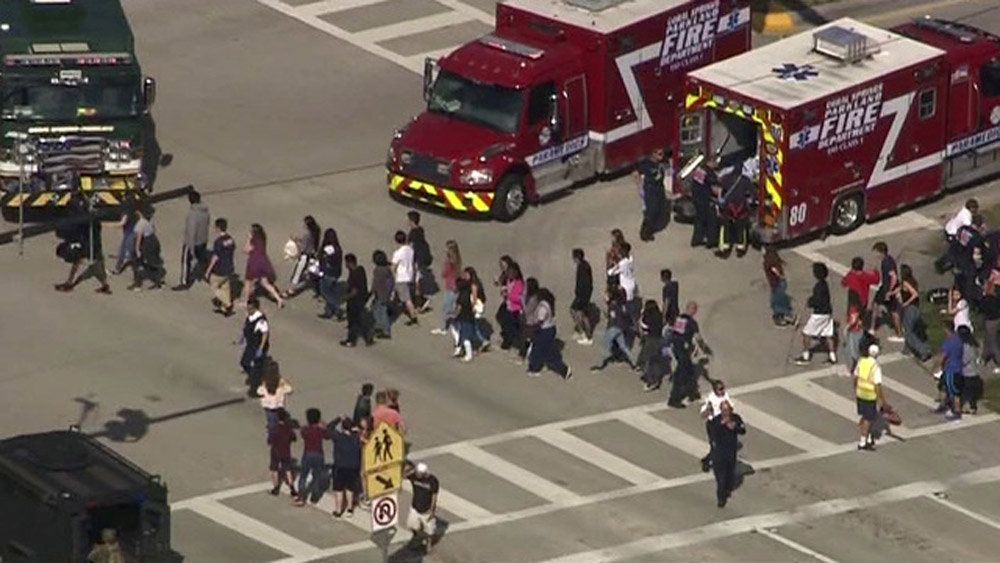
On February 14, 2018, a gunman opened fire with a semi-automatic rifle at Marjory Stoneman Douglas High School in Parkland, Florida, killing 17 people and injuring 17 others. Afterwards, the shooter allegedly fled the scene on foot by blending in with other students. A suspect, later identified as 19-year-old Nikolas Cruz, was arrested without incident about an hour later in nearby Coral Springs and subsequently charged with 17 counts of premeditated murder and 17 counts of attempted murder. Police and prosecutors have not offered a motive and are investigating "a pattern of disciplinary issues and unnerving behavior”. The killing spree is the deadliest high school shooting in United States history, surpassing the Columbine High School massacre that killed 15 including the perpetrators and the shooting came at a period of heightened public support for gun control that followed mass shootings in Paradise, Nevada, and Sutherland Springs, Texas in October and November 2017. Following the shooting, many students at Parkland founded Never Again MSD which is an advocacy group that lobbies for gun control. On March 9, Governor Rick Scott signed a bill that implemented new restrictions to Florida's gun laws and also allowed for the arming of teachers who were properly trained and the hiring of school resource officers. After the shooting, the Broward County Sheriff's Office received widespread criticism for its handling of the police response, with much of the criticism being directed at Sheriff Scott Israel for not addressing warnings about Cruz despite his lengthy record of threatening behavior. Israel's deputies were also criticized for staying outside the school and not immediately confronting the gunman. This led to the resignations of several police officers who responded to the scene, and Israel's suspension by new Governor Ron DeSantis. A commission appointed by then-Governor Scott to investigate the shooting condemned the police inaction and urged school districts across the state to adopt greater measures of security.
The shooting took place during the afternoon of February 14, 2018, at Marjory Stoneman Douglas High School in Parkland, Florida, an affluent suburb about 30 miles northwest of Fort Lauderdale. According to a police report, the shooter was carrying a rifle case and a backpack and was spotted and recognized by a staff member who radioed a colleague that he was walking "purposefully" toward Building 12. However, he did not pursue the shooter and call a "Code Red" to lock down the school. The first staff member later claimed that his training called for only reporting threats and his colleague hid in a closet. The shooter entered Building 12, which was a three-story structure containing 30 classrooms typically occupied by about 900 students and 30 teachers. Armed with an AR-15 style semi-automatic rifle and multiple magazines, the shooter entered a hallway and began firing indiscriminately at students and teachers. Smoke from the gunfire activated the building's fire alarm, causing confusion because there had been a fire drill earlier in the day. The shooter first killed three students in the hallway, then fired through the windows of four closed classroom doors, killing six more students and wounding thirteen others. Students were unable to seek shelter at "hard corners" because many of the classrooms in Building 12 lacked one and furniture obstructed potential safe spaces. Two of those killed were students in Ivy Schamis' Holocaust History class where she was teaching a class lesson on combating hate when the shooter fired shots into her classroom. Around five students from Schamis' class were injured. According to Schamis, the shooter was unaware he was shooting into a class on the Holocaust, even though he had scrawled swastikas onto his ammunition magazines that he left at the school. As the shooting unfolded, a "Code Red" was still not called in due to confusion among school employees over who had the authority to do so. At about 2:21 p.m. a staff member eventually activated a lockdown, but only after discovering the body of a victim and hearing gunfire. An armed school resource officer of the Broward County Sheriff's Office was on campus when the shooting broke out, and he remained outside between Building 12 and adjacent Building 7.
